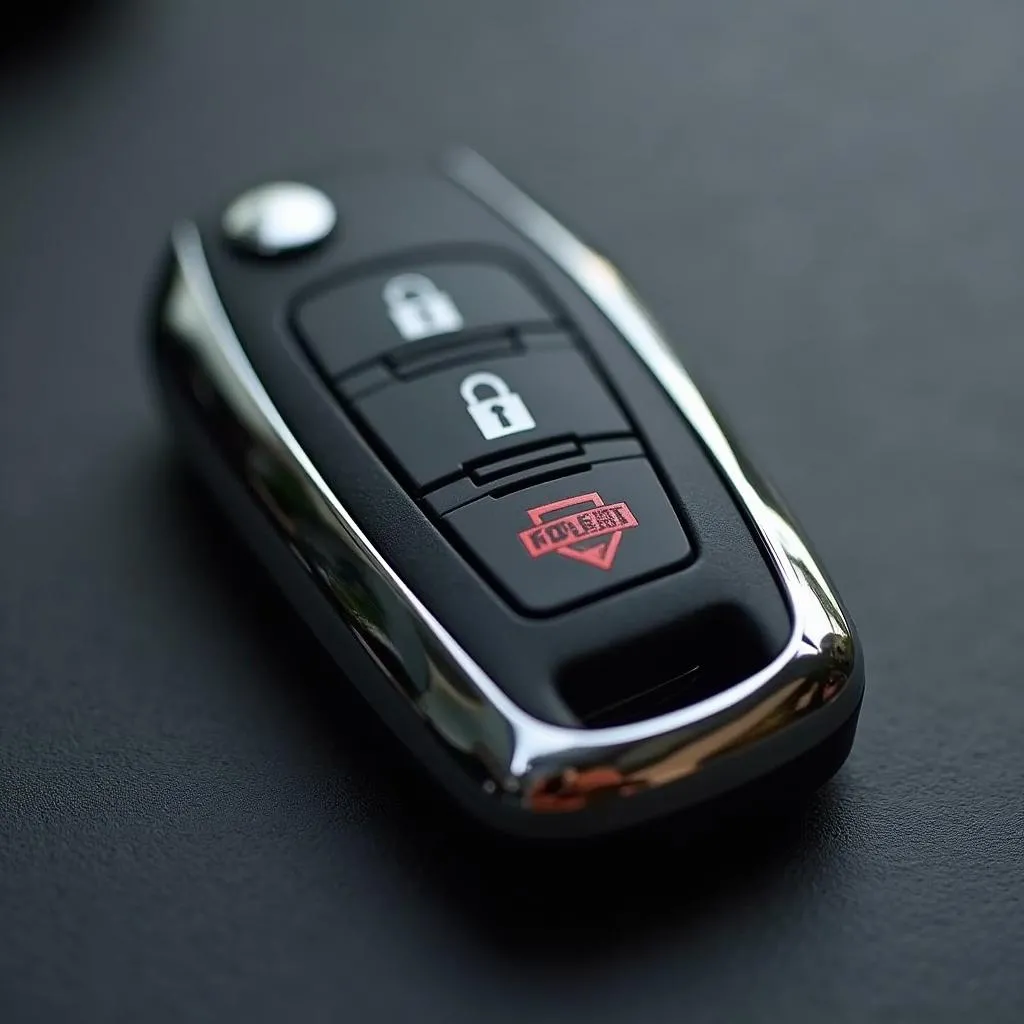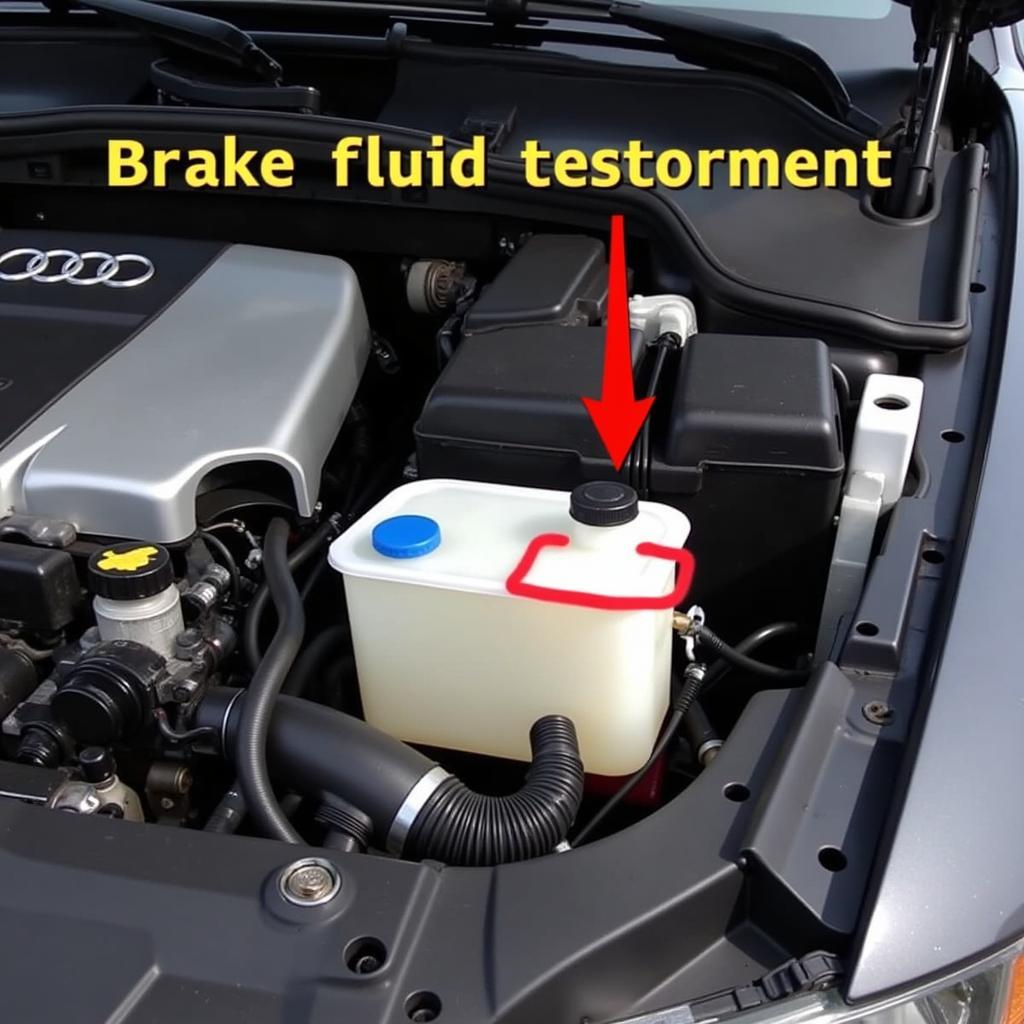The brake system warning light on your 2017 Honda HRV is a crucial safety feature. When illuminated, it signals a potential issue within your braking system that requires immediate attention. Ignoring this warning light could lead to reduced braking performance and increase the risk of an accident.
This comprehensive guide will walk you through the common causes of a 2017 Honda HRV brake system warning light and provide you with practical solutions to address them.
Understanding Your Honda HRV’s Brake System Warning Light
The brake system warning light, typically depicted as a red circle with an exclamation mark (!) inside, can illuminate for several reasons. In some instances, it may illuminate alongside other warning lights, providing further clues about the underlying issue.
Here’s what your Honda HRV’s brake warning light could indicate:
- Low Brake Fluid: This is the most common cause. Brake fluid is essential for transmitting force from the brake pedal to the wheels, and a leak or low fluid level can significantly compromise braking ability.
- Engaged Parking Brake: While seemingly trivial, forgetting to disengage the parking brake can trigger the warning light.
- Faulty Brake Light Switch: This switch activates the brake lights when you press the pedal. A malfunctioning switch can disrupt the warning light system.
- Worn Brake Pads: Brake pads naturally wear down over time. Most vehicles have wear indicators that trigger the warning light when replacement is needed.
- ABS System Malfunction: The Anti-lock Braking System (ABS) prevents wheel lockup during hard braking. A fault in this system can trigger the warning light.
- Other Brake System Issues: Less common causes include issues with the master cylinder, brake lines, or other components.
Troubleshooting the Brake System Warning Light
1. Check Your Parking Brake: Ensure the parking brake is fully disengaged. If the light remains on, proceed to the next step.
2. Inspect Brake Fluid Level: Locate the brake fluid reservoir under the hood (refer to your owner’s manual). The reservoir will have a “MIN” and “MAX” marking. If the fluid level is below the “MIN” mark, add the appropriate DOT 3 or DOT 4 brake fluid (check your owner’s manual for the correct type).
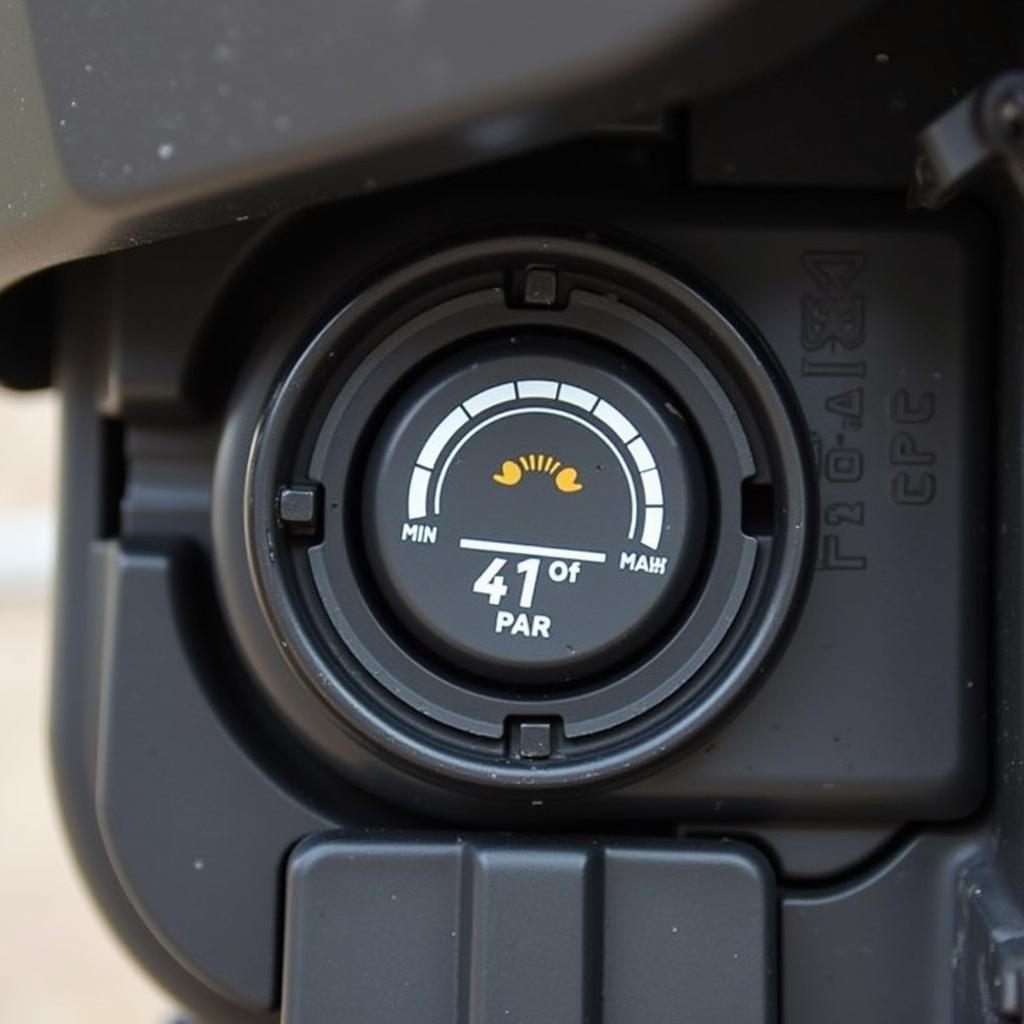 Honda HRV Brake Fluid Reservoir
Honda HRV Brake Fluid Reservoir
3. Inspect for Leaks: Carefully examine the area around the brake fluid reservoir and along the brake lines for any signs of leakage. Brake fluid is typically clear to light brown and has a slightly oily consistency. If you detect a leak, it’s crucial to have a professional mechanic inspect and repair it immediately.
4. Check Brake Pad Wear: Visually inspect the brake pads through the spaces between the wheel spokes. If the pads are significantly worn or you see a wear indicator contacting the rotor, it’s time for a replacement.
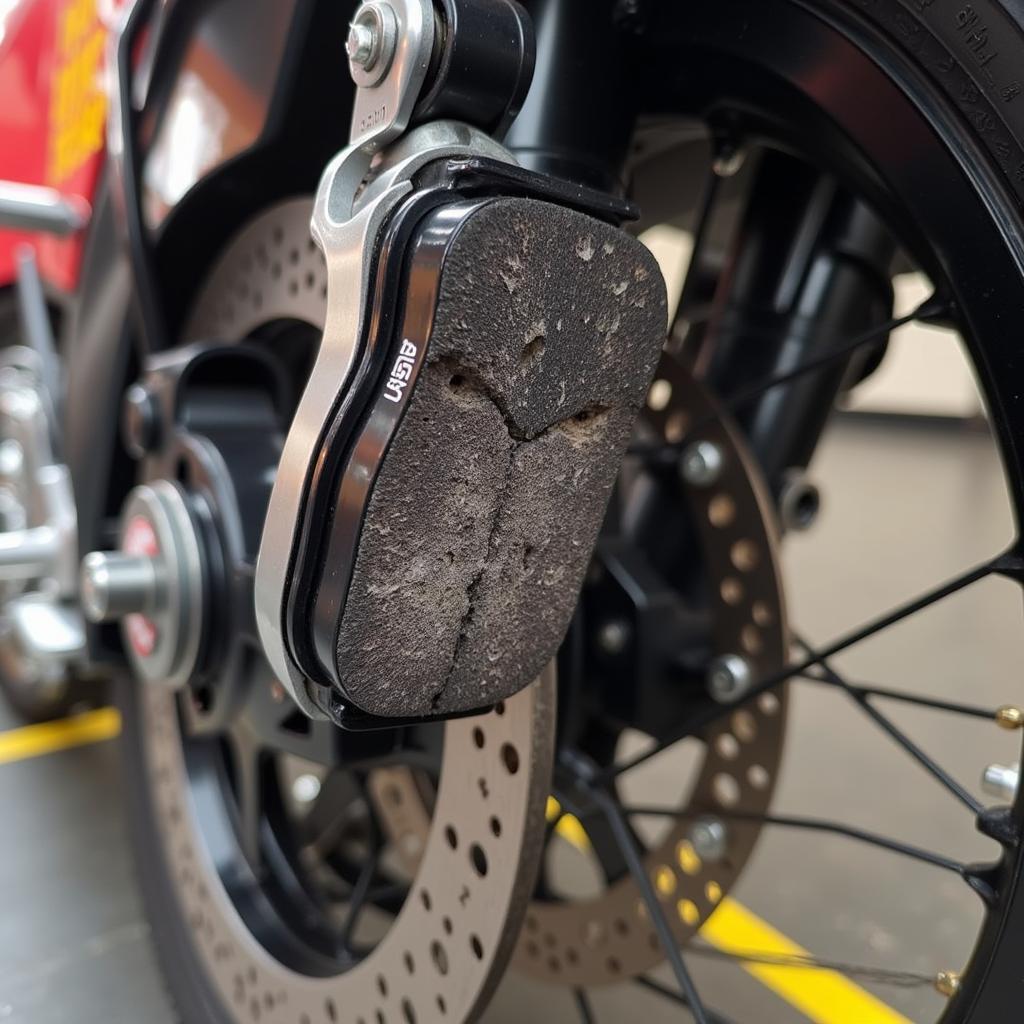 Worn Brake Pads on Honda HRV
Worn Brake Pads on Honda HRV
5. Seek Professional Diagnosis: If the above steps don’t resolve the issue or you suspect a more complex problem, it’s vital to seek professional help.
“Ignoring a brake system warning light is like ignoring a flashing ‘check engine’ light – it’s simply not worth the risk,” says John Miller, a certified automotive technician with over 20 years of experience. “Even if your brakes seem to be working fine, there could be an underlying issue that needs addressing.”
Remote Diagnostics and Software Solutions
Advancements in automotive technology have led to the development of sophisticated remote diagnostic and software solutions. These services, offered by specialized companies like ours, allow for convenient and efficient troubleshooting of complex car issues, including those related to the braking system.
Here’s how remote diagnostics and software solutions can help:
- Pinpoint the Root Cause: Our expert technicians can remotely access your vehicle’s onboard computer to retrieve diagnostic trouble codes (DTCs) and other relevant data. This allows us to identify the root cause of the warning light, even for intermittent issues that are difficult to replicate.
- Software Updates and Recalibrations: In some cases, a software glitch or outdated module firmware could be triggering the brake system warning light. We can remotely install the latest software updates and recalibrate modules to ensure optimal performance.
- Cost-Effective Solution: Remote diagnostics can often help avoid unnecessary trips to the mechanic and potentially identify minor issues before they escalate into major repairs.
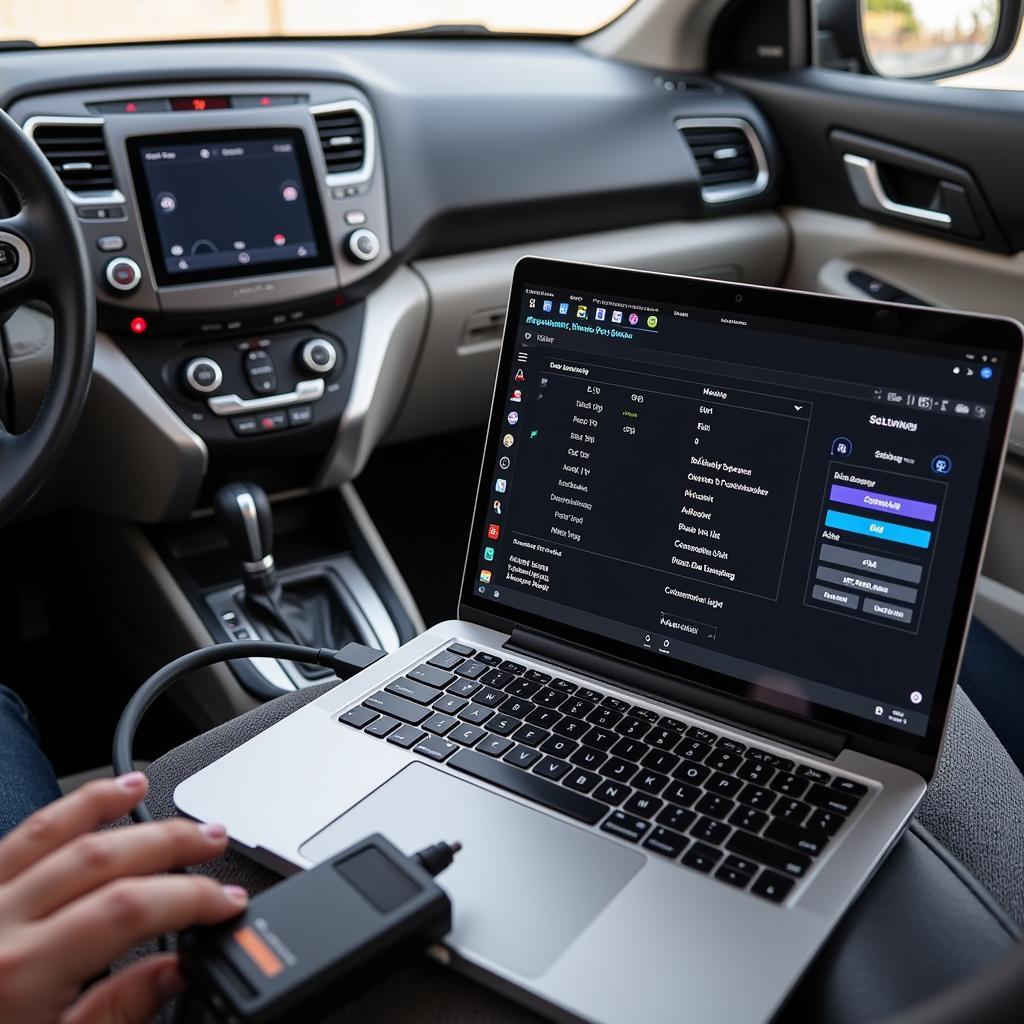 Remote Diagnostics for Honda HRV
Remote Diagnostics for Honda HRV
Conclusion
The brake system warning light on your 2017 Honda HRV should never be ignored. By understanding the common causes and taking the necessary troubleshooting steps, you can help ensure your safety and prevent potential accidents.
If you’re unable to resolve the issue yourself, don’t hesitate to contact a qualified mechanic or explore the benefits of remote diagnostics and software solutions. Regular maintenance and prompt attention to warning signs are crucial for optimal braking performance and overall vehicle safety.
FAQs
1. Can I drive my Honda HRV with the brake system warning light on?
It’s strongly advised against driving with the brake system warning light illuminated. Doing so could jeopardize your safety and potentially lead to further damage.
2. How often should I check my brake fluid level?
It’s good practice to check your brake fluid level at least once a month and before long trips.
3. How long do brake pads typically last?
Brake pad lifespan varies depending on driving style and conditions, but they generally last between 30,000 to 70,000 miles.
4. How much does it cost to replace brake pads?
The cost of brake pad replacement varies depending on the make and model of your vehicle and whether you choose OEM or aftermarket parts. On average, expect to pay between $150 to $300 per axle.
5. Can a low battery trigger the brake system warning light?
While uncommon, a severely low battery can sometimes cause erratic behavior in the vehicle’s electrical system, potentially triggering various warning lights, including the brake system warning light.

